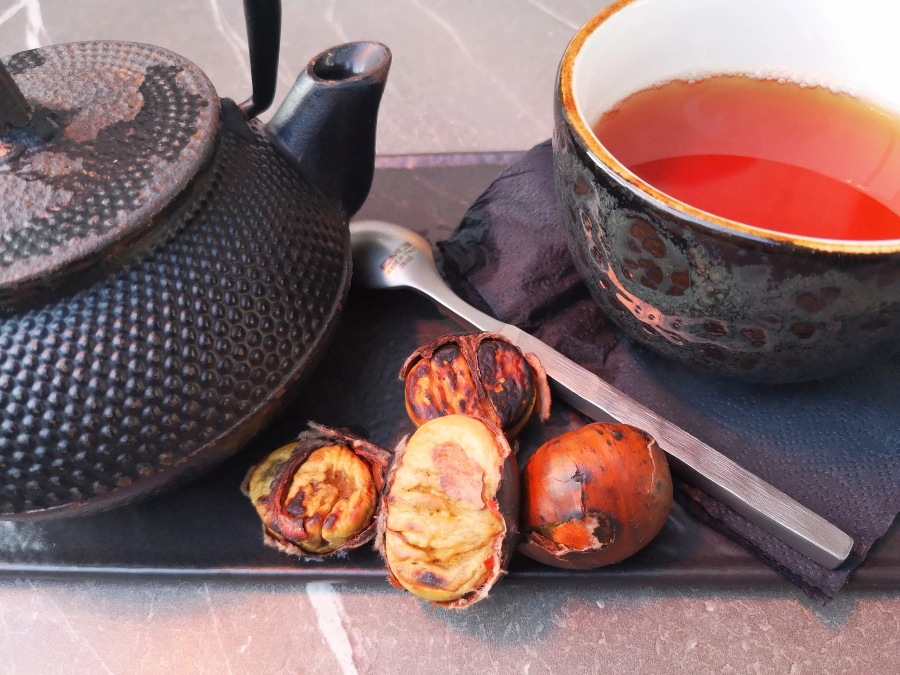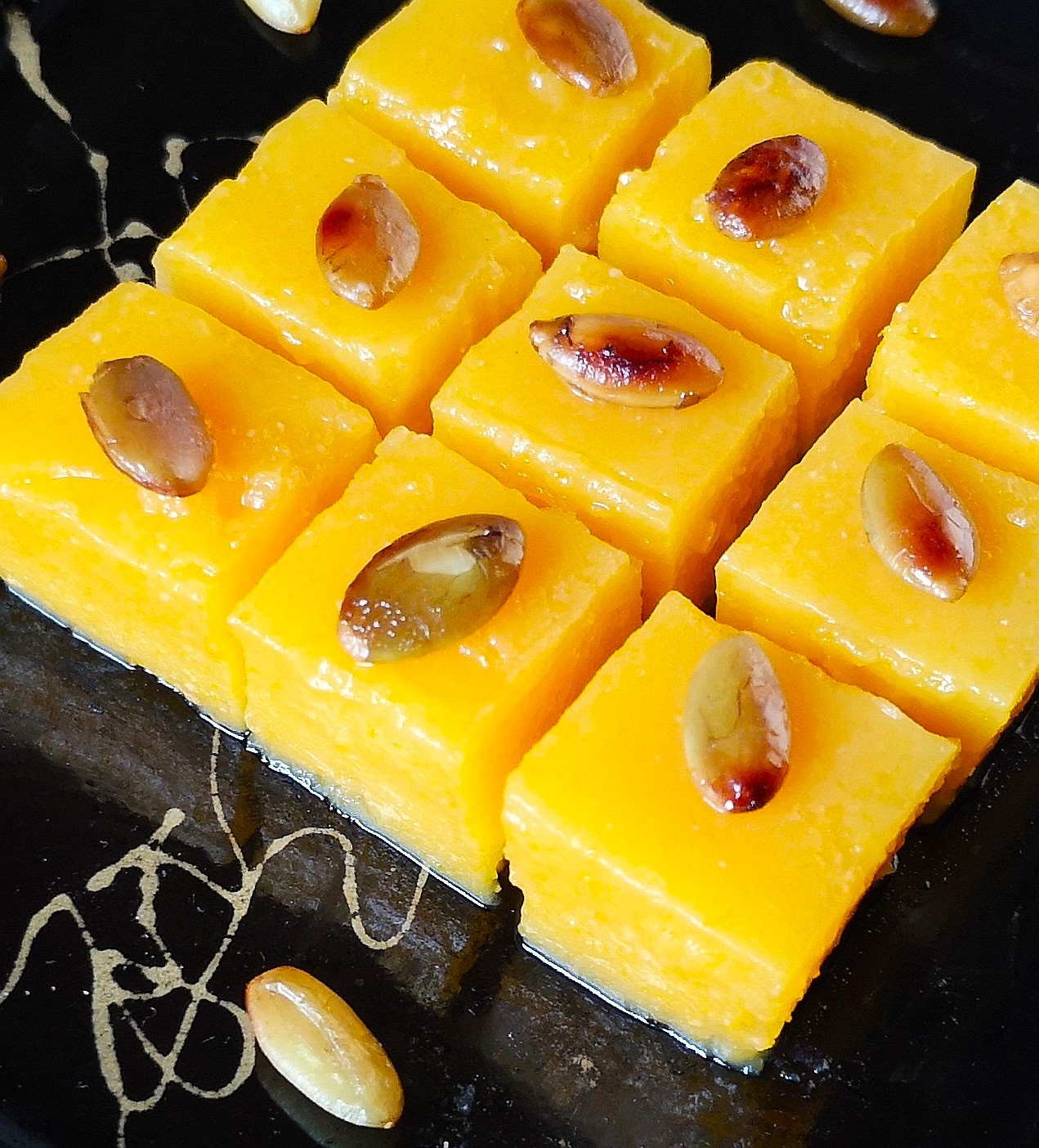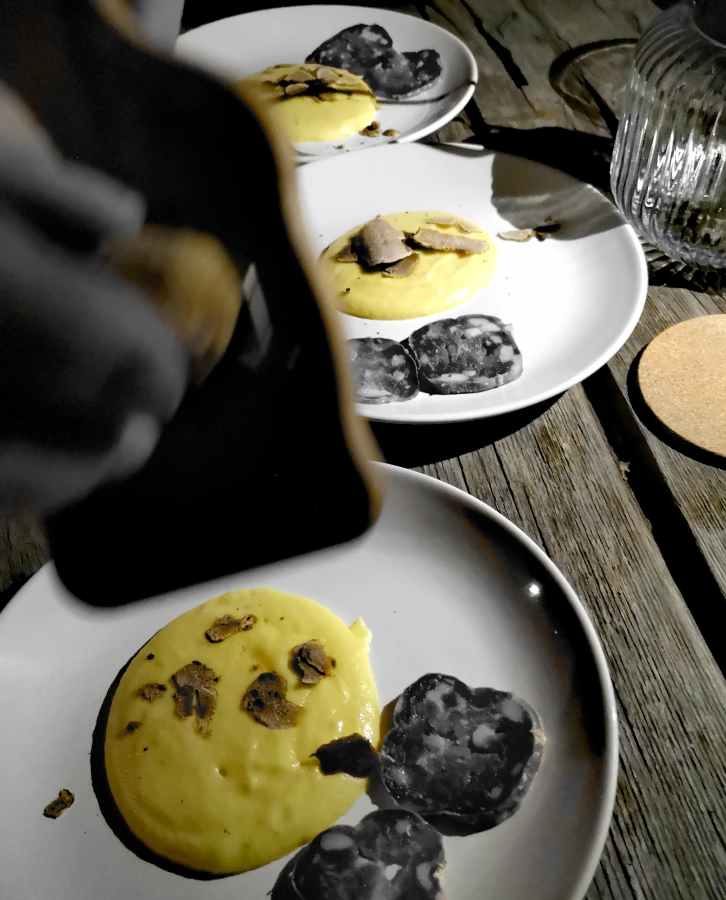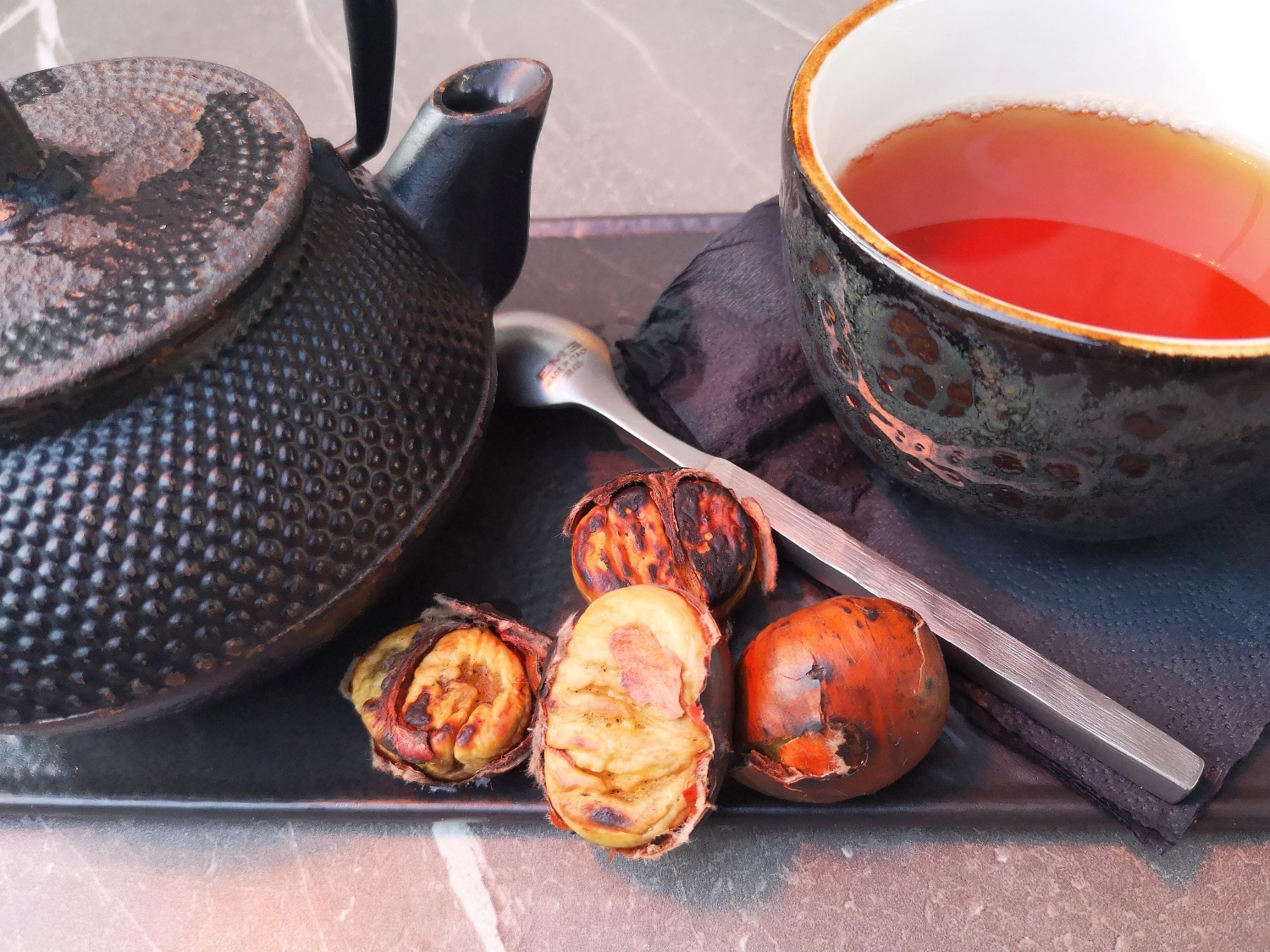
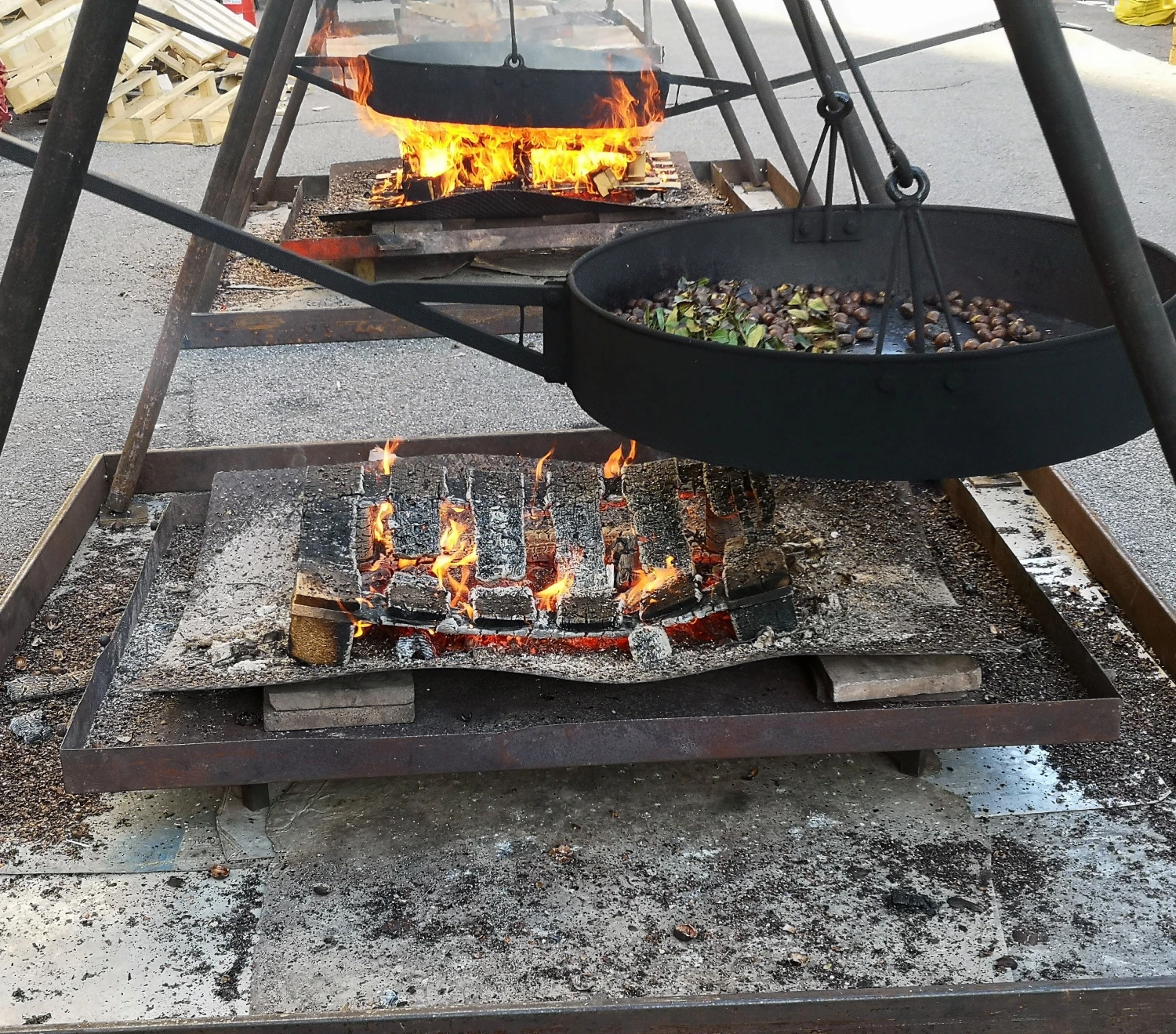

The good thing about the New Year so far is that my skin is beautifully hydrated!
This is thanks to the fact that I spent the Christmas holidays in the UK countryside where it rained almost solidly for two or three weeks. Despite the weather it was a wonderful trip…. but it was definitely very, very wet!
Things are drier back here in Italy and altogether sunnier, but one of the things I found I’ve been missing is the quintessentially English ritual of afternoon tea and cake. Being the perfect excuse to stop and have a mini snack in the ‘long hours’ between lunch and supper, I’ve decided to adopt it here in Italy!
During November and December I would often go to Bergamo and stop for an afternoon ‘something’ before heading back home. Being that time of year, the ‘something’ was often some hot roasted chestnuts and I remember particularly a café where I used to eat these whilst sipping a smoky and elegantly presented Chinese Lapsang Souchong tea. The two flavours were perfect together!
I was curious to know more about Lapsang Souchong tea and so I scrolled through various interesting ‘history of tea’ posts. Described by one tea company as having ‘smoky notes of peppered bacon, baked fruit and pine sap’ (um, does that sound appealing?) I learnt that Lapsang is still grown in the hills in north Fujian, China where it’s unique smoky aroma and flavour comes from drying the freshly-picked green leaves on bamboo racks over pine-wood fires.
The smoke from these pine fires contains vaporized amber essence (amber being fossilized pine resin) which is absorbed by the drying tea leaves, giving Lapsang Souchong its lingering smoky flavour.
You can read a brief history here: https://inpursuitoftea.com/blogs/the-ipot-journal/lapsang-souchong-history-production-brewing.
Just as an aside….I can recommend a delicious Italian after-dinner drink which I first drank in the Dolomite Mountains, called Pino Mugo. It’s a liqueur that has been infused and distilled with pine-tree resin, pine cones and pine buds …. without the smoke!

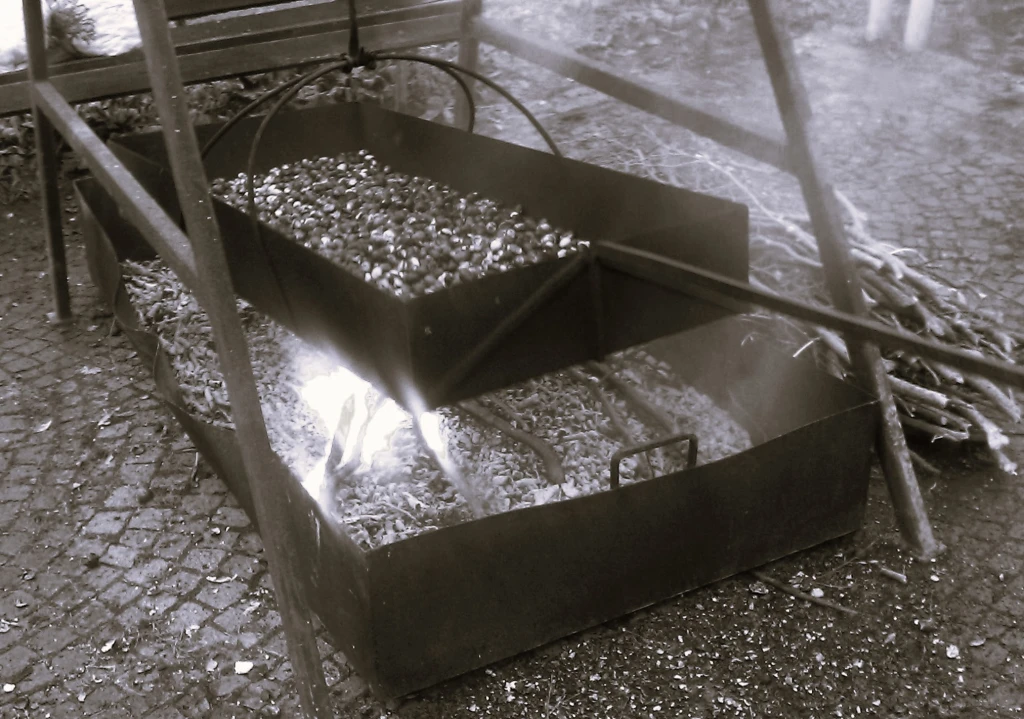
But to continue….this tea-smoking process reminded me of a particular type of chestnut from our local Orobie mountains and valleys here called ‘biligòcc’ (pronounced billy gotch) which are unique in the chestnut world for being smoked on racks over wood, this time chestnut wood. The chestnuts or castagne are not just roasted but first boiled, dried and smoked, just as they were years ago.
Ordinary unsmoked castagne have been used and consumed in many parts of Italy since ancient times – they were widespread throughout the Roman Empire, and really have been part of the daily diet since the Middle Ages.
In war time or in great poverty and hardship local communities were forced to support themselves on whatever they could find, grow and store, and as chestnut trees grow prolifically in Northern and parts of Central Italy the nuts became a fundamental ingredient of cucina povera – in soups, polenta, pasta and other dishes, both savoury and sweet.
By the way, I’m talking about sweet chestnuts (castanea sativa), not to be confused with horse chestnuts (aesculus hippocastanu) which are not edible.
Sweet chestnuts became such a staple food that they were known as ‘il pane dei poveri’ (poor man’s bread) and in fact, similar to whole-wheat flour, chestnut flour is rich in complex carbohydrates (perfect for giving a steady source of energy), full of vitamins and minerals and is a good source of dietary fibre. But unlike whole-wheat bread, it’s gluten free.
It wasn’t only the nuts that were foraged, the whole chestnut tree would be used. The nuts were eaten and ground for flour, the wood was chopped for cooking and heating, or planked for construction, and the leaves were dried and used for animal bedding or made into herbal teas to treat respiratory problems and digestive disorders. Nothing was wasted!
You can buy chestnut-leaf tea online, such as from this speciality tea website: www.valleyoftea.com.
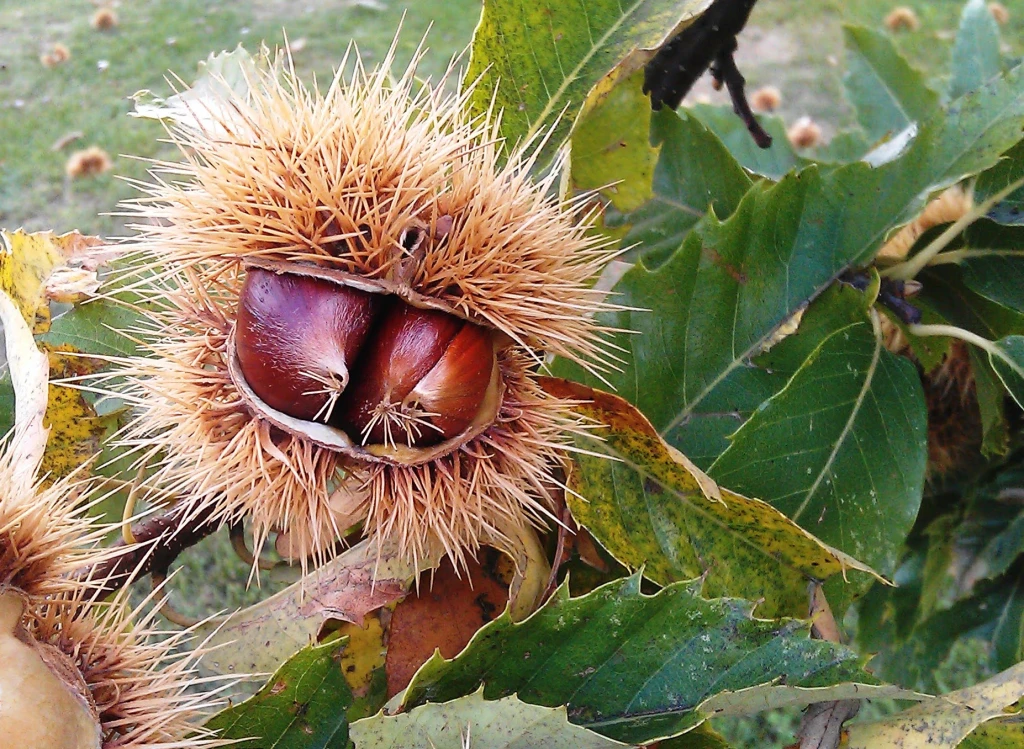
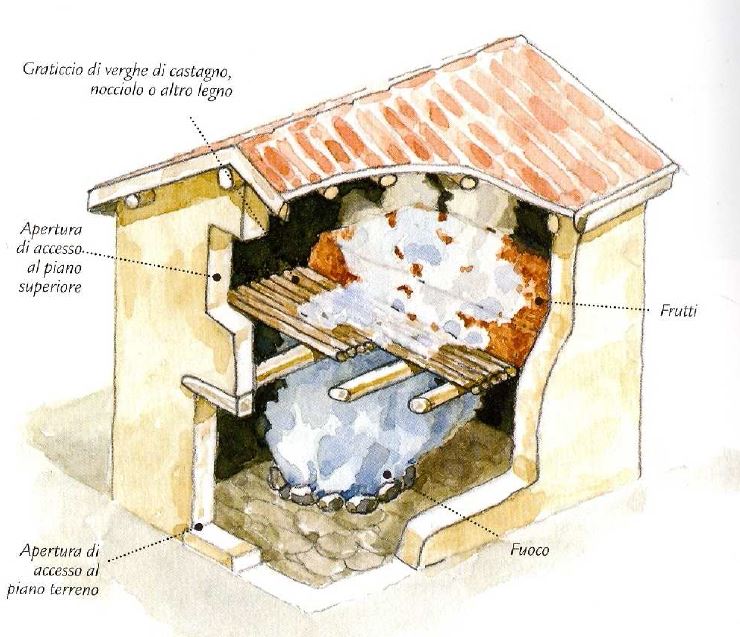
The traditional method for ‘biligòcc’, which is still practiced today, was to first collect the chestnuts in jute bags.Hopefully gloves were used to protect their hands from the spiny husks, which in Italian are called ‘ricci’ the same name used for hedgehogs!
Once collected, the nuts were taken to an ancient secadur (small stone building) where they were dried and smoked on racks or grills over a chestnut-wood fire.
Every two days the chestnuts were turned using long rakes, until after about 30-40 days the nuts were finally removed and boiled in large pots. They were then removed, rinsed in cold water and dipped in oil to give them a shine before storing – or they were strung together and sold in strands.
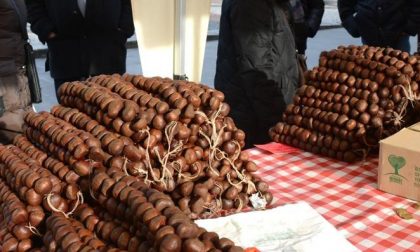
I saw these same shiny chestnut strands for sale at a ‘Sagra di Biligòcc’ I went to a couple of years ago.
This annual event – I see the next one is on the 4th February – was a wonderful mountain festival filled with smoke, food, wine and music! Come the evening, I saw local musicians, most of them in traditional dress and black mountain capes, wander the cobbled streets playing their old-fashioned instruments like zampogna or baghèt (similar to bagpipes).

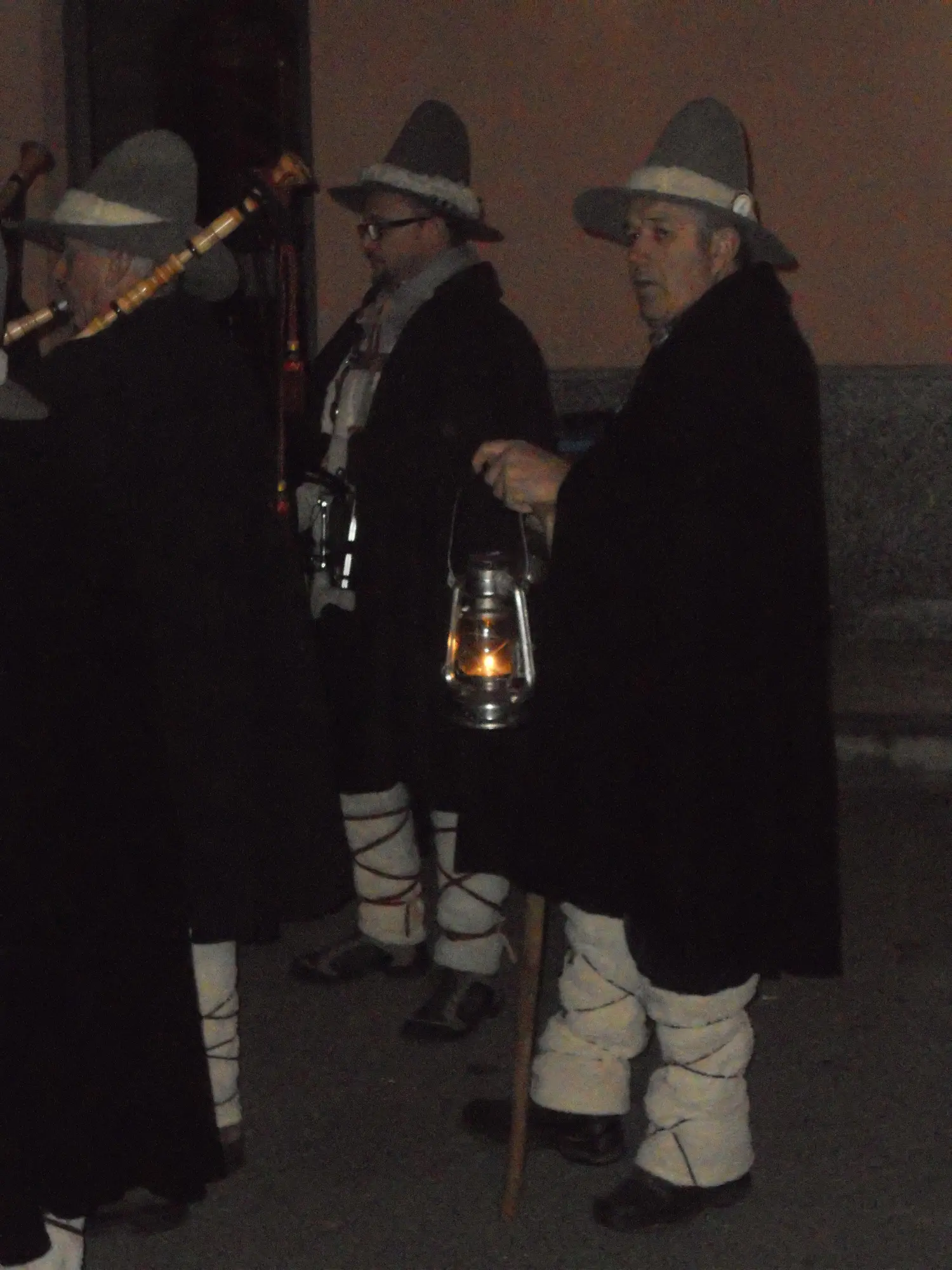

In the flickering light of lanterns and smouldering chestnuts fires and with the ancient pastoral music echoing through the valley, you could almost have believed you were back in medieval times.
Speaking of medieval times, there is a traditional chestnut-flour cake called Castagnaccio which dates back to the Middle Ages. It’s origins are in Tuscany but it’s made and eaten in many parts of northern Italy or wherever chestnuts grow.
I’ve chosen however to make my much lighter Chestnut-Flour Cake with Lapsang Drizzle which was inspired by my tea-time treat of chestnuts and smoky tea!
RECIPE: Gluten-Free Chestnut Flour Cake with a Lapsang Drizzle
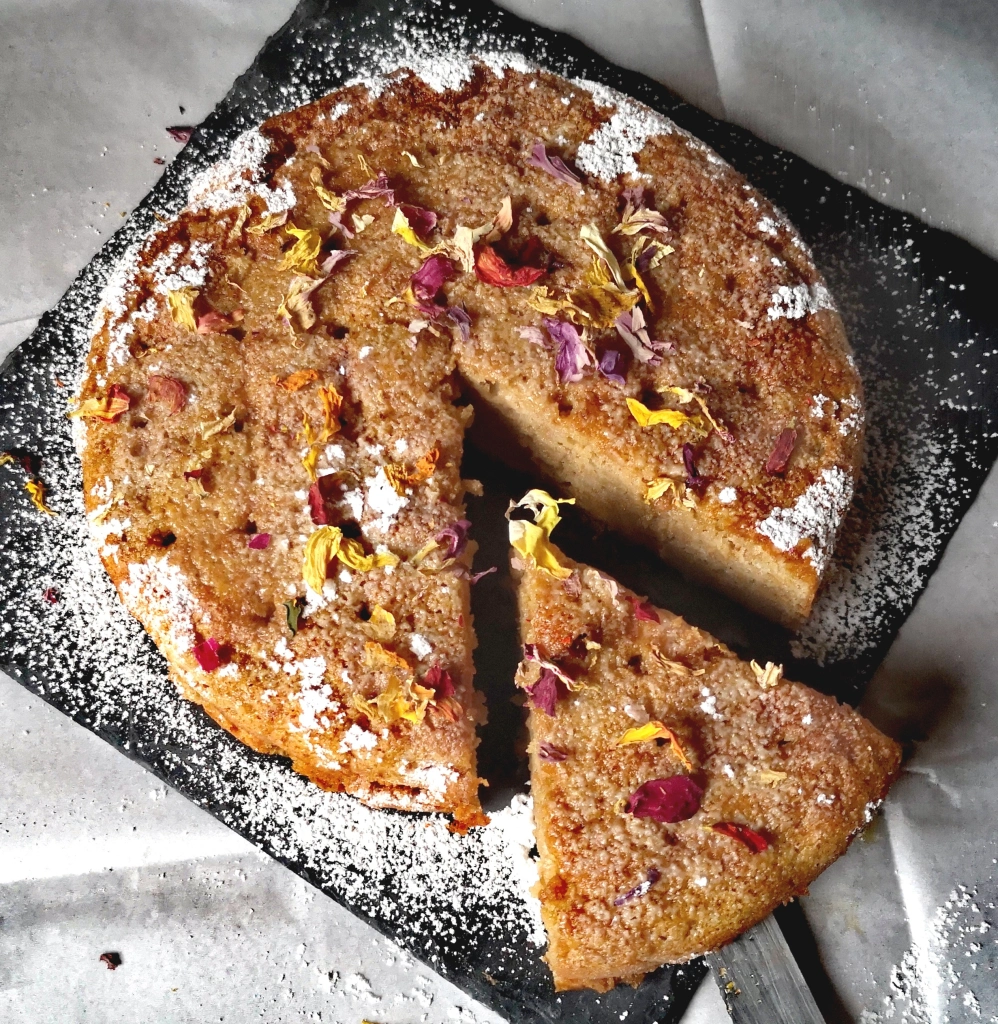
This is a lovely light chestnut-flour sponge cake, which is drizzled with a Lapsang Souchong syrup to infuse the cake with a smoky flavour. For more smokiness you could serve a slice of this with a cup of freshly-brewed Lapsang Souchong tea….or you could just have a slice with your glass of Pino Mugo!
Preheat oven 180C Line a 17cm or 7-inch cake tin with parchment paper
Chestnut-Flour Cake Ingredients
2 eggs
50g caster sugar
100g Greek yoghurt
½ tsp lemon zest
62g chestnut flour *
¾ teaspoon baking powder Pinch salt
Method
Separate the eggs. Take a bowl and whisk the yolks and sugar together until you have a thick, creamy mixture and then stir in the yoghurt and lemon zest. Sift the flour, baking powder and salt and fold it into the mixture.
In a separate bowl whisk the egg whites until you have stiff peaks and then fold this into the mixture.
Pour it all into the cake tin and bake for 20-25 minutes. Remove from the tin and cool on a wire rack.
Lapsang Souchong Syrup Ingredients
150 ml boiling water
2 heaped tablespoons of lapsang souchong tea leaves
2½ tablespoons sugar
Method
Put the tea leaves into a small bowl.
Pour over the boiling water and allow to infuse for about half an hour.
Strain the tea into a small pan and add the sugar.
Stir slowly over a low heat until the sugar dissolves, then bring to the boil for about a minute, stirring.
Remove from the heat and allow to cool.
Chestnut Flour Cake and Lapsang Souchong Drizzle
When the cake has cooled but still slightly warm, prick all over with a fork or skewer.Put the cake rack over a baking dish (to catch the drips) and then drizzle the syrup over the cake.Leave the cake to completely cool and to allow the syrup to soak in.
Decorate in any way you like – I’ve used icing sugar and dried flowers.
* I can find chestnut flour in supermarkets here in Italy – but you can also find it online

